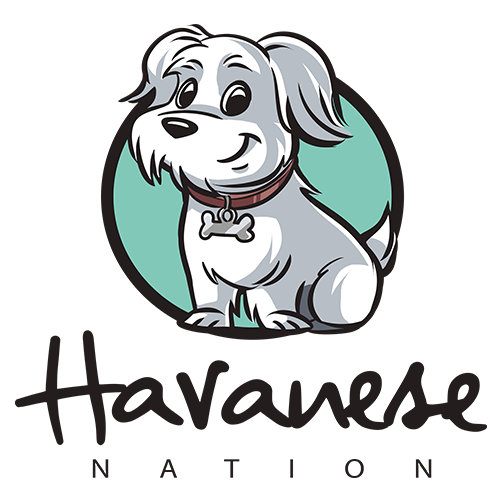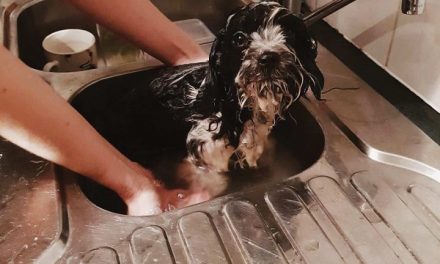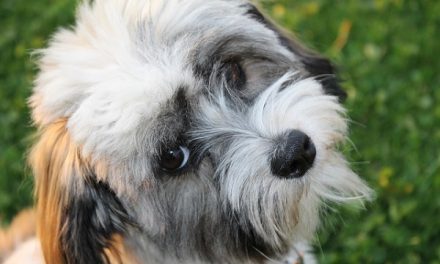Believe it or not, the adorable Havanese breed originates from Cuba!
They are small, curious, and endlessly playful, so it should come as no surprise that these friendly dogs make both intelligent and loveable companions.
But, just like with all long-haired breeds, their coats require ongoing attention to keep them healthy and manageable.
If you are looking to buy a Havanese puppy or you’re already the proud owner of one, this article will help to teach you all about why the Havanese coat is so unique and, in particular, provide valuable advice on how to groom your cute Havanese correctly, whether at home or in the salon.
Similarly, if you are working as a professional groomer and have customers bringing in their Havanese pet for a grooming appointment, you can also make good use of the information listed below. Read on to learn more about how to groom a Havanese correctly:
The coat of a Havanese dog:
Havanese dogs are double-coated and long-haired. They have a top coat and also an undercoat. Though many double-coated dogs have a different texture between their top and undercoats (most undercoats are soft but the topcoat is coarse) a Havanese coat is different because it has no distinct difference in texture between its top and undercoat (both are soft.)
Therefore, when the hairs loosen at the root and begin to fall, they do not drop from the fur but instead, become tangled up. This can lead to knotted, matted patches occurring, which do not only look unsightly but are also uncomfortable and unhealthy for your dog as they can hold dirt and even mites.
Brushing
One of the most important parts of grooming your Havanese is brushing! We recommend trying to brush your dog daily. Not only will this keep their fur soft and knot-free, but it will also be a way to grow your bond together.
To brush, first, lightly spray one area of the dog’s coat with a fine mist sprayer. After spraying an area of fur, carefully start brushing. If you want, you could mix a little bit of conditioner into the water you spray as this will help to detangle the fur if it is knotted. Additionally, make sure you (gently) brush all the way down to the roots because mats tend to first form near the skin.
Line Brushing
A popular method of brushing that many Havanese owners like is line brushing.
To do so, first, carefully separate the hair into sections. After parting the hair, then make a line with the hair going horizontally across the dog from the nose, all the way to the tail so that you can clearly see the skin. Brush the hair up and then down, little by little, starting at the feet and moving up towards the center of the back.
When you brush the hair, make sure that you hold the brush flat. Holding the brush at an angle will rip the coat and could potentially scratch your dog’s skin and hurt them. Similarly, when you are brushing the legs, make sure to carefully lift up the top leg and brush the underside of the leg on the bottom and then repeat on the other side.
Eyes
When it comes to caring for the eyes, one of the most common issues that a Havanese dog faces is tear staining. Though it is not harmful in any way, many owners do not like the appearance, especially if they own a show dog.
To reduce the appearance of the stains, some people like to use a whitening toothpaste. They carefully apply it using their finger or a swab onto the staining, as well as around the mouth, and then leave it on overnight, washing it out the next day. If you would like to try this out, be extra careful not to get the toothpaste in your dog’s eyes.
Alternatively, some people prefer the method of taking a damp cotton ball soaked with a dog-friendly eyewash to wipe under the eyes. For those who do not like to use a product, some owners simply use an old toothbrush dipped in water and then carefully clean under the eyes every morning or night.
Ears
To make the ear cleaning process easier, put some ear cleanser liquid in the ear before you start your dog’s bath. This will soften the wax and make it looser, which will, in turn, make it easier to clean out with a Q-tip or cotton ball.
Toenails
Though there are plenty of tools out there, the best option, especially if you’re a beginner or doing it at home, is to use a nail cutter. With light-colored nails, it is easy to see the “quick” (the part that will bleed). However, with black nails, you cannot see where it begins which runs the risk of catching the quick and causing it to bleed. If this happens, don’t panic! You can quickly apply pressure to the nail to make it stop and, with practice, you can clip faster and with more confidence. However, if you would rather not risk it, you could also take your little dog to a vet – just to be safe!
Additionally, if you do not want to use a nail cutter, you could use the alternative of a rotary sanding too, which grinds the nails down rather than cutting them.
Feet
With a pair of hair scissors, carefully trim the hair between the pads of the feet and around the foot to tidy it up. If your dog is lying down, carefully extend the leg and brush the hair down evenly around the foot. Then, while holding the hair, trim anything that is beyond the bottom of the foot for a neat appearance. You could also do this by standing your dog up on a flat surface.
Different Coatstyles
Cording
Fancy trying out an eyecatching look that will match the outgoing personality of your little Havanese? If so, you might be interested in a corded coat style.
Cords look very similar to the way that dreads look on a human and is an optional style that is most popular in Havanese dogs that are entered into competitions. If you do decide to undertake this style, you should know that it requires a lot of upkeep and can take almost 2 years to achieve.
As the two coats begin to intertwine together, make sure that you carefully separate the matting hair into cords, making sure to mist the hair daily to keep it hydrated.
One the cords have fully grown in, you will not be able to bathe your dog as the cords do not take to water well and it is nearly impossible to wash out all of the shampoo and conditioner. You will also have to make sure that the dog is kept far away from sand, twigs, and just about anything else that could get stuck in the cords and make them dirty and full of debris.
Braiding
If cording doesn’t appeal to you, you’ll be pleased to hear that braiding is a low-maintenance way to tame your dog’s hair and keep it out of their eyes.
You can either choose to braid your dog’s hair when their hair is wet after a bath or when it is completely dry. In our opinion, we think that braiding when the hair is dry is a lot easier. All you need to do is pet your dog and relax them, part the hair in the middle of the head and down to the edge of the eye and you’ll be ready to begin braiding.
To do so, tie a band on one side to keep it out of the way and then begin braiding the section you have selected first. Re-divide the hair into three parts and then begin to plait the hair in the exact way you would do on a human, trying your best to make each side nice and even.
If you’re braiding in preparation for a show, the braids will usually have to be very small, neat, and end at the corner of the eye. If you’re simply just wanting to keep hair out of your Havanese’s eyes, larger braids will work just fine, or a single braid going down the middle would also serve the same purpose – the choice entirely depends on what works best for you and your dog.
Topknots
If you want to make your Havanese even more adorable, you might like the idea of a topknot.
You can get plenty of soft cloth-covered scrunchies from the drugstore (these are the best because they are soft and won’t hurt your dog). Carefully section the hair and then pull the hair up to the top of the head using the scrunchie to tie it. Make sure that you don’t make the topknot so tight that it pulls the eyes upward and, just to be safe, gently loosen it a little by carefully wiggling the scrunchie around.




